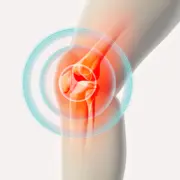Wet Spring Snow Increases the Risk of ACL Injuries for Skiers
Spring skiing often means wetter, heavier snow which can increase the risk of injury compared to skiing on lighter, drier snow. Knee injuries, including strained or torn ACLs (anterior cruciate ligament), are especially common in these conditions. Why can wetter snow create more injuries? There are a few reasons:
- Increased resistance: Wet, heavy snow provides more resistance when skiing, making it harder to maneuver and turn. This can result in muscle fatigue, which can increase the likelihood of mistakes, falls and injuries.
- Variable conditions: Spring snow can create a mix of conditions on the slopes, such as slushy patches, ice, and uneven terrain. These inconsistencies can catch skiers off guard, leading to falls and potential injuries.
- Binding release issues: Ski bindings are designed to release in certain situations to prevent injury. However, the sticky nature of wet, heavy snow can interfere with the proper functioning of the binding release mechanism. If a binding does not release correctly during a fall, there is an increased risk of injury.
How can skiers injure their ACL?
The anterior cruciate ligament (ACL) is one of the key ligaments in the knee, connecting the femur (thighbone) to the tibia (shinbone) and providing stability to the knee joint. ACL injuries are common among skiers throughout the season, and many causes are exacerbated by wet heavy snow:
- Landing after a jump: Injuring the ACL is possible when landing from a jump, especially if the skier lands flat-footed or with their weight leaning back. This position places significant stress on the knee joint, potentially causing the ACL to tear.
- Twisting or cutting movements: Sudden changes in direction or twisting movements while skiing can place excessive force on the knee joint, potentially causing the ACL to rupture. This can occur if the ski catches an edge or if the skier tries to make a sudden turn while the foot is stuck in heavy snow.
- Ski binding release failure: If the ski binding does not release during a fall, the forces transmitted through the ski can put the knee in a vulnerable position, increasing the risk of an ACL injury.
- Collisions: Colliding with another skier, snowboarder, or a fixed object can result in a direct impact to the knee, potentially causing an ACL injury.
What is the difference between a sprained and a torn ACL?
The main difference between What is the difference between a sprained and a torn AC
a sprained ACL and a torn ACL lies in the severity and extent of the damage to the ligament.
Sprained ACL: A sprain refers to an injury in which the ligament fibers are stretched or partially torn but not completely separated. ACL sprains are typically classified into three grades, depending on the severity of the injury:
- Grade 1 (mild): The ligament is stretched, but the fibers are not torn. There is usually mild pain, minimal swelling, and no loss of function.
- Grade 2 (moderate): The ligament is partially torn, resulting in more significant pain, swelling, and some joint instability.
- Grade 3 (severe): The ligament is completely torn, causing significant pain, swelling, and joint instability. This grade is often referred to as a torn ACL.
Torn ACL: A torn ACL refers to a complete separation of the ligament fibers, usually classified as a Grade 3 sprain. In this case, the ACL loses its ability to provide stability to the knee joint, leading to significant pain, swelling, joint instability, and often a feeling of the knee “giving out” during weight-bearing activities.
The treatment for an ACL injury depends on the severity of the sprain or tear. Mild to moderate sprains (Grade 1 and Grade 2) may heal with conservative treatment, including rest, ice, compression, elevation, and physical therapy. However, a severe sprain or complete tear (Grade 3) often requires surgery, such as ACL reconstruction, followed by an extensive rehabilitation program.
Here are six tips to help prevent ACL injuries and other knee injuries while skiing in spring conditions:
- Equipment: Ensure your ski bindings are adjusted correctly by a professional, as they are designed to release during falls to minimize the force on the knee. Remember, varying conditions, such as wet, heavy spring snow, may cause bindings to function differently or fail to function correctly.
- Strengthening exercises: Strengthening the muscles surrounding the knee, such as the quadriceps, hamstrings, and hip muscles, can provide better stability and support.
- Warm-up and stretching: Warm up and stretch before skiing to prepare your muscles and joints for activity, reducing the chance of injury.
- Ski within your limits: Know your skill level and ski within it, avoiding terrain or situations that may be beyond your comfort level or could increase the risk of injury.
- Learn and use proper form: Taking lessons from a certified instructor can help improve technique and reduce the risk of injury.
- Take breaks: avoid excessive muscle fatigue by taking breaks during the day and pacing yourself. Be especially mindful toward the end of the day, when slushy conditions are likely to exist, and bottom of the mountain runs are most crowded.
While skiing in wet and heavy snow can increase the risk of injury, proper preparation and these safety measures can help limit the risks.
If you suspect an ACL injury, it is essential to consult an orthopedic or sports medicine specialist for a proper evaluation and treatment plan. The knee experts Dr. Purcell, Dr. Doner and Dr. Weinstein at CCOE can diagnose and treat ACL strains, tears, and other knee injuries. Click here for an appointment or to learn more.


